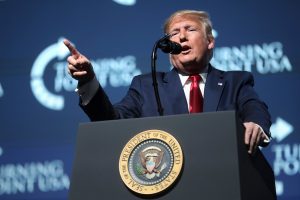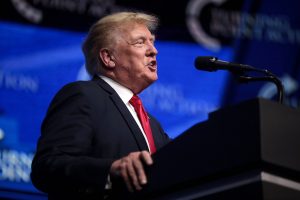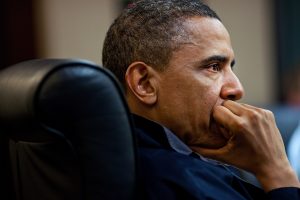[ad_1]

GETTY IMAGES
It wasn’t way back that the U.S. financial system wanted a shot within the arm. Hundreds of thousands of People had misplaced their jobs because the nation shut itself all the way down to gradual the unfold of a lethal virus. On the time, policymakers, advocates and economists agreed that People wanted instant aid — and they also shortly acted on it.
Lawmakers handed a $2.2-trillion stimulus bundle in March 2020, adopted by two extra installments of COVID-19 aid later in 2020 after which once more in 2021. In complete, it added as much as one of the beneficiant fiscal responses to the virus globally.
There could be a catch, although. As U.S. costs proceed to rise by charges not seen in a long time, it’s turn into clear that the stimulus got here at a major, unintended price: inflation. It’s unclear whether or not inflation has reached its peak, however the scenario is now economically and politically poisonous, and it has left lots of the similar policymakers, advocates and economists now asking whether or not the stimulus checks had been a mistake.
The stimulus had massive financial advantages — nevertheless it additionally fueled inflation
On the one hand, COVID-19 stimulus undoubtedly helped People in some very massive, tangible methods. Particularly, it decreased poverty — past merely holding individuals afloat throughout the early days of the pandemic.
In keeping with the U.S. Census Bureau’s supplemental poverty measure, the stimulus funds moved 11.7 million individuals out of poverty in 2020 — a drop within the poverty charge from 11.8 to 9.1 %. And the 2021 poverty charge was estimated to fall even additional to 7.7 %, per a July 2021 report from the City Institute. We don’t know but whether or not this got here to fruition, however Laura Wheaton, a senior fellow on the City Institute and one of many analysts behind the 2021 numbers, advised us that it was clear from their evaluation that the stimulus checks had been driving a dramatic decline in poverty.
Extra broadly, the stimulus checks additionally cushioned staff throughout one of many worst financial crises in trendy historical past, which seemingly helped the financial system bounce again in file time. In April 2020, when People had been receiving the primary spherical of checks — as much as $1,200 with the CARES Act — the unemployment charge was at a disastrous 14.7 %. However two years later, it’s nearly returned to its pre-pandemic ranges, with many job openings. “I hope we don’t overlook how superior it was that we supported individuals so properly, and that we recovered as shortly as we did,” mentioned Tara Sinclair, a professor of economics at George Washington College.
Nevertheless, there may be additionally proof that the stimulus, particularly the final spherical, seemingly stoked greater and better costs for the very individuals it was supposed to assist. Although world provide chain points (and, extra lately, the warfare in Ukraine) have been important drivers of inflation, the divergence between U.S. and European inflation suggests there’s extra to it than that. In truth, a latest evaluation from researchers on the Federal Reserve Financial institution of San Francisco discovered that the stimulus could have raised U.S. inflation by about 3 share factors by the top of 2021.
People are struggling financially consequently — notably low-income individuals who don’t have a cushion to soak up greater costs. Furthermore, inflation is outpacing wage progress. Regardless of a 5.6 % soar in wages year-over-year, 8.5 % inflation in March 2022 meant that People noticed an almost 3 % lower in inflation-adjusted wages.
This wasn’t a very unexpected downside, both. Again in early 2021, some economists raised the alarm in regards to the dimension of the ultimate spherical of stimulus — the American Rescue Plan, which was headlined by $1,400 direct funds to particular person People — for its potential to overheat the financial system and create an inflationary atmosphere. In keeping with Thomas Philippon, a professor of finance at New York College’s Stern College of Enterprise, the stimulus checks performed a chief function in creating extreme demand, which in flip spurred inflation. “The demand increase was very giant within the U.S., and the stimulus checks had been a big a part of it,” Philippon mentioned. However on the similar time, many policymakers — together with Jerome Powell, chair of the Federal Reserve — thought that the danger of placing too little cash into the financial system appeared higher than the danger of placing in an excessive amount of.
The stimulus turned political
A part of the issue is that the final rounds of stimulus — the checks that went out in December 2020 and March 2021 — may very well have been too massive. However the resolution to ship an additional $2,000 to most People wasn’t backed by proof or financial calculations. It was formed by politics.
Although the CARES Act handed on a near-unanimous, bipartisan foundation in March 2020, when former President Donald Trump was in workplace, a a lot totally different story performed out within the transition from his administration to now-President Biden’s. Towards the top of 2020, Trump pushed for added $2,000 funds, which Home Democrats supported and later handed, however that effort was blocked by Republicans within the Senate who had been alarmed by the value tag. Finally, direct funds of simply $600 had been greenlit — regardless of broad-based assist for the larger checks amongst voters of each events.
However Democrats, with management of the Senate hanging within the stability, determined to marketing campaign for bigger stimulus checks within the run-up to the Georgia run-off elections. It’s unimaginable to know whether or not assist for the checks gave now- Sens. Raphael Warnock and Jon Ossoff their respective edges, however Democrats did find yourself successful each seats and passing the American Rescue Plan two months later, which included $1,400 checks to satisfy the specified $2,000 goal.
Claudia Sahm, director of macroeconomic analysis on the Jain Household Institute, mentioned that the March 2021 verify ought to have ideally been smaller. However due to the politics of the problem, there wasn’t room to push for a decrease quantity. “Individuals had been promised the $2,000 checks,” she mentioned. Politically, that meant it was both going to be a $2,000 cost — or nothing in any respect.
Furthermore, numerous the COVID-19 financial response leaned left, which can assist clarify why so many policymakers underestimated the specter of inflation. They had been as a substitute extra apprehensive about not giving People sufficient cash — a lesson of a earlier period. Democrats who had been in workplace throughout the Nice Recession — together with Biden, who helped oversee the 2009 restoration as vp — approached the COVID-19 restoration decided to not repeat the errors of spending too little cash. It wasn’t clear on the time, however many economists now consider that Congress’s reluctance to pump cash into the financial system after the 2008 crash led to an extended and grinding restoration.
That’s why this time round, Democrats wished to pour cash into the financial system. It appeared like a transparent political winner, since assist for one more spherical of stimulus funds was extraordinarily excessive: Polls from late 2020 and early 2021 constantly discovered that the overwhelming majority of People, together with many Republicans, supported the proposed stimulus checks. However although Democrats received management of the Senate and handed the overwhelmingly standard stimulus — albeit on a party-line vote — that popularist ethos hasn’t appeared to bear fruit since. Particularly, voters don’t appear to be rewarding Democrats and Biden for the additional cash granted by the stimulus. A majority of voters blame Biden for inflation — together with a large chunk of Democrats — and disapprove of his dealing with of the financial system extra broadly.
As an alternative of serving to Biden and his occasion, then, the stimulus might find yourself hurting them within the 2022 midterm elections.
We are going to seemingly study the improper classes from the stimulus
The teachings we draw from the response to the COVID-19 recession are vital, as a result of they’ll nearly actually form how we reply to the subsequent financial downturn. Within the wake of the Nice Recession, policymakers shot too low. Now, they seem to have shot too excessive. If this had been the story of Goldilocks, we’d be poised to get issues good subsequent time — however politics shouldn’t be a fairy story, and it’s very potential that we’ll overcorrect at any time when one other recession hits.
In some ways, we’re nonetheless determining what the teachings are because the pandemic nonetheless isn’t over. And it’s, in fact, laborious to disentangle what might have occurred had the federal government’s response not been so aggressive. One clear lesson of the COVID-19 pandemic, although, is that America’s social security web wasn’t ready to take care of a disaster of this magnitude, which is an enormous a part of the explanation why the response needed to be so large.
Our social security web wasn’t able to catch everybody who wanted it, so it was very troublesome to determine who actually wanted aid and when the faucet needs to be turned off, in response to Sinclair. Rickety state unemployment insurance coverage programs couldn’t be recalibrated to interchange individuals’s incomes, so many individuals ended up being paid far more after they misplaced their jobs. It wasn’t simple to focus on direct funds to individuals in particular revenue brackets, so the funds went out to some households who didn’t want them.
However with a greater social welfare infrastructure, we would not have been as weak to inflation, in response to Darrick Hamilton, a professor of economics and concrete coverage on the New College. Had we been capable of establish and attain the individuals who had been most in want of assist, an enormous, blanket response wouldn’t have been vital.
“[T]he automated stabilizer of that leaves us much less weak to financial shocks, like a pandemic recession,” Hamilton mentioned. “We might have that kind of coverage infrastructure already in place.”
The issue is that politicians’ incentives run the opposite method — there’s no political profit to getting ready for a nebulous future disaster, in order that they usually don’t. And as anxiousness about inflation mounts, there’s little urge for food to pump more cash into the nation’s social security web. “It could be a sweeping change, and it might seem like an enormous expenditure,” Sinclair mentioned. “And it’s laborious to inform individuals, ‘Hey, look, if we do that, it’ll seem like some huge cash now, however the subsequent time there’s a disaster, we received’t find yourself simply spending a trillion or two, willy-nilly.’”
Relying on what occurs with inflation, economists could find yourself concluding that the tradeoffs of the COVID-19 stimulus had been price it, however that received’t essentially be the political takeaway. All of this underscores the elemental pressure of any response to an financial disaster — will probably be designed by politicians, whose targets are formed by the prevailing political winds. And at this level, it appears very seemingly that the political ache inflicted by rising costs will form the way in which we bear in mind the present response, no matter whether or not economists agree.
[ad_2]








Leave a Reply